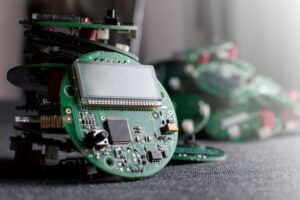Round Circuit Board Design Considerations
2022-11-30PCBS can be customized in different shapes, although square and rectangular PCBS are the most common, and as the electronics industry continues to evolve, circular PCBs are increasingly become popular. Round circuit boards are commonly used in consumer electronics, wearable devices and so on.
Advantages of round PCBS
The advantage of round PCBs is that they provide more board space. However, be very careful when making a circular PCB, as the process of making it is more complicated than that of a rectangular PCB. The fact that the wiring process of a circular PCB takes a lot of time also has an impact on the total cost of producing it.
Types of circular PCB
Circular PCB types are divided into several types according to the number of layers:
- Single layer circuit board, widely used in low density design, commonly used in lighting field round circuit board. Such a PCB has components on one side of the board and a conductor pattern on the other.
- Double-sided circuit board, widely used in wearable devices, electricity meters, etc.
- Multi-layer circuit boards, with more than two conductive layers, which provide higher density and larger board space.
Circular PCB design rules
To be sure, circular circuit boards are more complex in design than rectangular circuit boards. There are some rules to follow when it comes to round boards:
1. Drawing shapes is very important when using CAD tools
2. It is best to use straight line molding around the circular circuit board
3. If it is designed for high-speed equipment, it is better to choose multi-layer design.
4. The shape of the ground plane or power plane can be defined to a large extent using the polygon editor.
5. The plate design of the circular circuit board is usually the stamp hole.
6. When assembling, a gap of 10 millimeters (about 0.39 inches) must be maintained between the round boards. However, with larger milling cutters, the clearance can be increased.
7. For the assembly of circular circuit boards, both SMT (surface mount technology) and THT (through-hole technology) can be used to place components, but SMT is more suitable for circular circuit boards.
To sum up
Although the circular circuit board design is a bit complicated, but using the right tools and following the circular design rules, help to speed up the product design process.
Working with a professional electronics manufacturer during the PCB design phase can help identify design defects without having to deal with the high cost of defects.
With over 10 years of experience in electronics manufacturing, KingPCB is fully equipped to handle your PCB manufacturing and assembly requirements. If you have any questions, feel free to contact us by email sales@kingpcb.com




